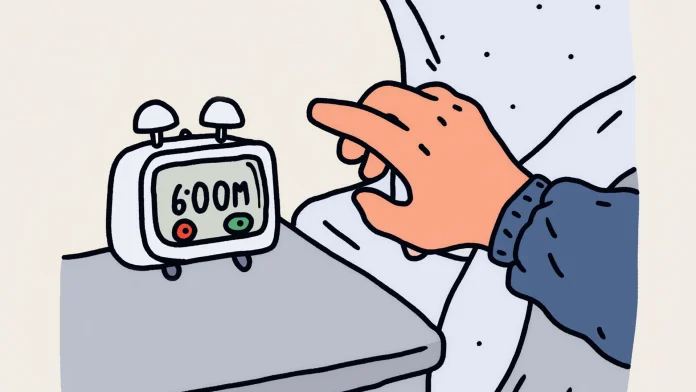Written by Sofia Campos Caminos
Medically reviewed by Susana Pontiggia (Psychologist, Specialist in Neuroscience and Human Behavioral Sciences, Consultant in Personal and Organizational Development)
The idea of stepping into a virtual world might once have felt like something out of a sci-fi movie. Few could have predicted that this immersive technology would evolve beyond entertainment. Virtual Reality (VR), long seen as a futuristic novelty, is now emerging as a powerful therapeutic tool. Psychologists and researchers are finding that this technology can help manage a range of mental health conditions, including anxiety, depression, post-traumatic stress disorder (PTSD), and phobias.
What Is VR Therapy?
VR therapy uses virtual reality environments to deliver or enhance psychological interventions. Through tools like headsets, motion sensors, and interactive 3D worlds, individuals can safely explore scenarios that might trigger anxiety, stress, or trauma in real life—but in a highly controlled setting.
What makes VR therapy unique is its ability to personalize the healing journey. Therapists can adjust scenarios in real time to suit each person’s needs. Emerging research suggests VR may also potentially support treatments for certain symptoms in psychotic disorders, such as improving social functioning—though this remains an evolving field. Still, VR therapy offers a consistent, secure space for exposure therapy, helping people confront fears and challenges in a safe and guided way.
The Science Behind the Headset
The principle behind VR therapy’s effectiveness is exposure therapy, a well-established cognitive behavioral therapy (CBT) technique. In exposure therapy, patients are gradually introduced to the source of their fear or trauma in a safe, controlled way. VR amplifies this approach by simulating environments that are safe, repeatable, and highly customizable.
A 2021 analysis published in JMIR Mental Health found that VR Exposure Therapy is emerging as a highly effective complement to traditional treatments for phobias. Some clinical applications include:
- PTSD (especially in military and first responders)
- Phobias (e.g., flying, heights, spiders)
- Social anxiety and public speaking
- Generalized anxiety disorder (GAD)
- Stress-related disorders
- Chronic pain (especially when paired with biofeedback)
- Autism spectrum disorders (to support social and coping skill development)
How VR Therapy Is Being Used Today
A growing number of wellness clinics and tech-forward practices are integrating VR therapy into their services—though adoption is still in early stages for many.
Some use VR to help clients practice mindfulness or meditation in calming, nature-based environments, supporting people who struggle with stress or trauma. Others focus on cognitive-behavioral exposure therapy, offering graded challenges in virtual settings like crowded buses, elevators, or job interviews.
It’s also gaining popularity in adolescent therapy, where digital natives often respond more openly to tech-assisted approaches.
In corporate wellness, VR is emerging as a tool to combat burnout, offering brief, immersive “mental resets” for employees who need to recharge.
“We are using virtual reality as a portal that transports you into nature—because that’s what truly relaxes people. We’re simply bringing it into everyday life, whether it’s a river, a mountain, a landscape,” says Bautista Esnaola, cofounder of Ecoverse, a wellness-tech startup combining XR*, artificial intelligence, and neuroscience to reduce stress and enhance productivity.
*Extended Reality (XR) is an umbrella term for immersive technologies that merge digital and physical environments. This includes Virtual Reality (VR), Augmented Reality (AR), and Mixed Reality (MR). XR is increasingly used in fields like health, education, and cognitive science to create interactive, multisensory experiences.
What Makes VR So Effective for Mental Health?
Immersion Increases Engagement
People are more likely to engage deeply in therapeutic exercises when they feel emotionally and physically present. VR activates our brain’s spatial awareness, making even simulated environments feel real enough to provoke authentic emotional responses.
Control Over Stimuli
Therapists can finely adjust every variable—how long the exposure lasts, the intensity of the environment, and even when to pause or rewind a scenario. This enables highly personalized treatments tailored to each patient’s tolerance and goals.
Safe Repetition
Unlike real-world exposure (e.g., visiting a crowded place), VR allows clients to face fears repeatedly, without logistical or physical risks.
Progress Tracking
Modern VR platforms can monitor movement, eye tracking, heart rate, and more—allowing therapists to gather real-time data and adjust interventions accordingly.
The Future of Therapy?
Until recently, VR therapy was limited by cost and availability. But with the rise of affordable headsets and remote platforms, access has expended significantly. With decreasing costs, therapists can now rent or subscribe to VR therapy tools, and clinics can integrate them without major overhead expenses.
As technology continues to advance, so does the potential of VR therapy. AI-driven avatars, real-time biofeedback, and increasingly realistic virtual environments are making it possible to create fully customized, measurable, more dynamic experiences.
While not meant as a replacement for traditional therapy, VR is rapidly becoming a powerful complement to in-person and online care— offering new hope for more personalized, accessible, and engaging mental health support in an increasingly digital world.





